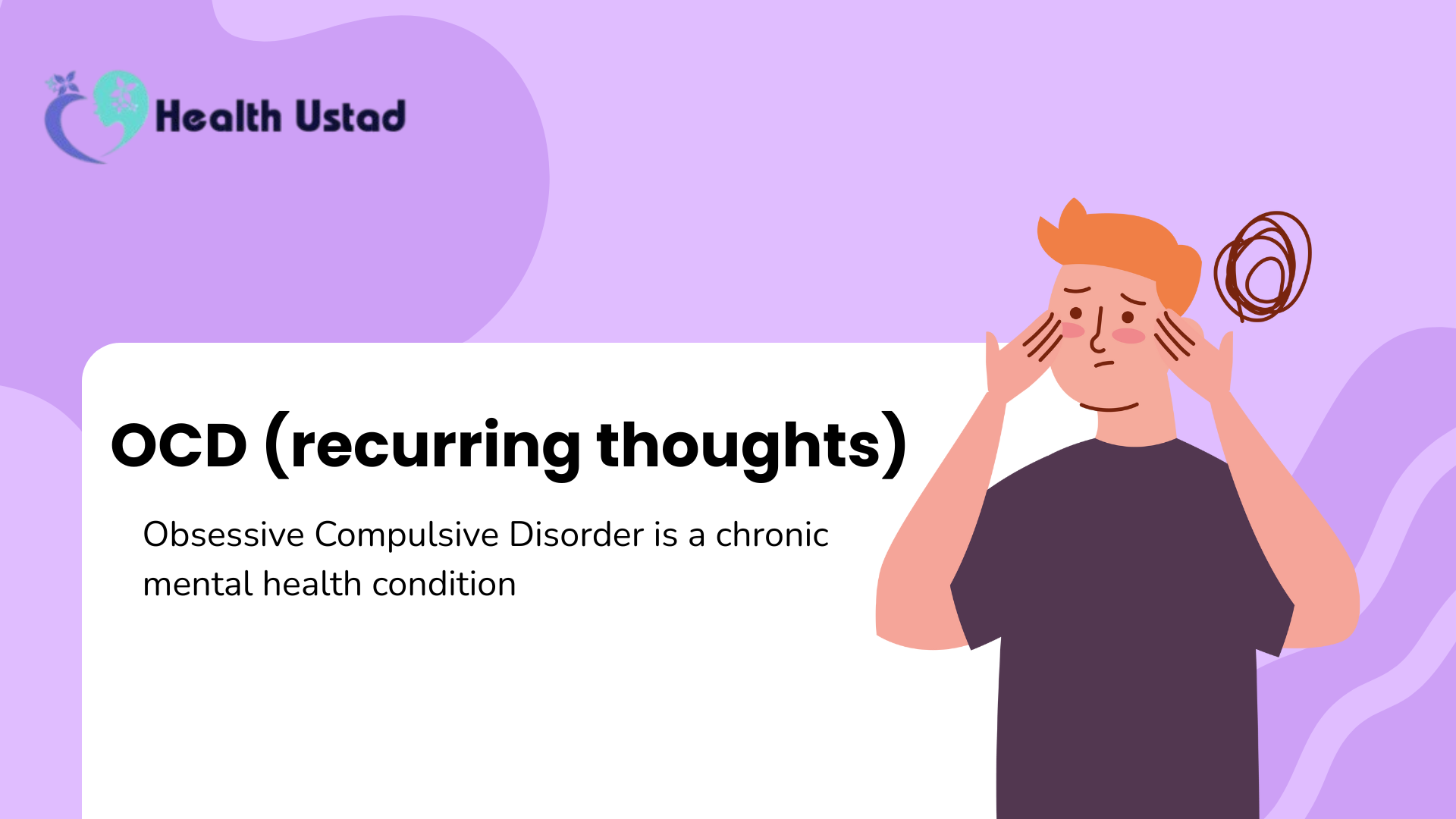What is Obsessive-Compulsive Disorder (OCD)?

Obsessive-compulsive disorder (OCD) is a mental disorder that affects many people around the world. The main symptoms of OCD are obsessions, which are repeated unwanted thoughts, and compulsions, which are repeated actions performed to overcome these thoughts. People with OCD can live happily without any disturbed behavior with the proper care, as the disorder makes it hard to perform everyday tasks.
In this article, we will look at:
The meaning and development of OCD.
Signs and symptoms of OCD.
Causes and warning signs.
Different types of OCD.
Finding out what it is and what treatments are available.
Helpful tips for dealing with OCD every day.
What does “obsessive compulsive disorder” (OCD) mean?
Obsessive Compulsive Disorder is placed as a separate group in DSM-5 TR. People with OCD often have invasive and repeated thoughts and urges to do something or perform a specific action that makes them anxious. To deal with anxiety caused by these obsessions, they perform any action over and over again, like cleaning, checking, or going over things in their mind.
Sometimes compulsions can give you a break, but they often make the OCD cycle worse, making symptoms worse with the passage of time.
What are the symptoms of Obsessive Compulsive Disorder?
According to DSM-5 5 the diagnostic criteria of OCD, Obsessive-Compulsive Disorder:
Diagnostic Criteria A.
Obsessions & compulsions or both are present: Obsessions can be defined by (1) and (2):
1. The patient experiences repeated and persistent thoughts and urges. Sometimes these disturbances are unwanted and cause marked anxiety or distress in the person.
2. The individual tries to suppress and overcome such thoughts and urges. A person tries to neutralize them by performing some other thought or action (i.e., by performing a compulsion).
Compulsions can be defined by (1) and (2):
- Repetitive behaviors like hand washing, checking, and ordering. Compulsions can include mental acts such as praying, silently repeating words, or counting. These acts are performed in response to obsessions.
- The repeated behaviors or mental acts are performed to reduce anxiety or distress caused by obsessions.
Diagnostic Criteria B.
These obsessions and compulsions are time-consuming, and in some cases, they take more than 1 hour per day. These obsessions and compulsions cause clinical distress and impairment in the social and occupational life of the individual.
Diagnostic Criteria C.
The obsessive-compulsive symptoms are not due to the use of any physiological effect or any drug.
Diagnostic Criteria D.
The symptoms of another mental disorder do not better explain the Obsessive and Compulsive disturbances, such as excessive worries, that occur in generalized anxiety disorder.
What are common Signs of OCD?
As we explained, two kinds of OCD symptoms occur side by side: compulsions and obsessions.
Obsessions are persistent thoughts that repeatedly resurface. Some common persistently occurring thoughts are:
(i) Persistent fear of getting sick from dirt & germs
(ii) Fear of safety, repeatedly checking the locks of the doors, or persistently turning off appliances
(iii) Violent or aggressive thoughts
(iv) Obsession with religion or morals
(v) Persistent thoughts of sex
(vi) Persistent fear of losing control over oneself
As we know, compulsions are repetitive actions that involve performing tasks repeatedly.
Compulsions are actions repeated again and again by people. These actions relieve the stress caused by obsessions. Here are a few examples of compulsions:
(i) Washing your hands again and again or cleaning too much
(ii) Checking locks, switches, and appliances often
(iii) Putting and arranging things in a particular order or repeatedly counting them
(iv) Persistently repeating prayers and phrases
(v) Seeking assurance and reassurance from others
(vi) Thinking persistently about what happened to find mistakes
All the actions often take up hours or more than that each day.
What are the causes of OCD?
Research and Studies indicate that various psychological, biological, and environmental factors cause OCD.
1. Genetics:
OCD often runs within families, so it has a significant genetic influence.
2. Neurological:
Some disturbances in the structure or function of the brain, like abnormalities in serotonin-related brain circuits, can also cause OCD.
3. Personality traits:
People with a perfectionist personality and who are very detail-oriented have a higher chance of OCD.
4. Trauma and Life Stressors:
Any Traumatic or stressful life event can cause OCD symptoms.
People who have OCD often also have other mental disorders like tic disorders, anxiety, and depression.
What are the different types of OCD?
Sometimes people can have more than one type of OCD. These types are shown in different ways.
Common types of OCD are:
(i) Contamination OCD
Individuals with this condition are often preoccupied with cleanliness, germs, and diseases.
(ii) Checking OCD
People with this condition often find themselves constantly looking at things, such as stoves or doors.
(iii) Symmetry and ordering OCD
People need things to be placed precisely in order.
(iv) Obsessive-Compulsive Disorder (OCD):
People have repeated and intrusive thoughts that can be sexual, violent, and blasphemous.
(v) Harm OCD:
With this, there is a persistent fear of harming oneself or others.
(vi) Relationship OCD (ROCD)
This occurs when someone is always worried about the loyalty or health of their relationship or spouse.
How to figure out if someone has OCD?
To figure out OCD, a psychiatrist or clinical psychologist usually uses the DSM-5 (Diagnostic and Statistical Manual of Mental Disorders) criteria to make the diagnosis. The diagnosis includes:
1. Assessing the duration and frequency of obsessions and compulsions.
2. Defining whether symptoms cause substantial distress or dysfunction.
3. Excluding other conditions such as psychosis, depression, and generalized anxiety disorder.